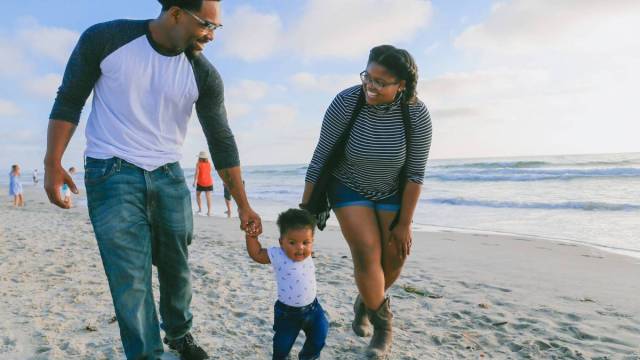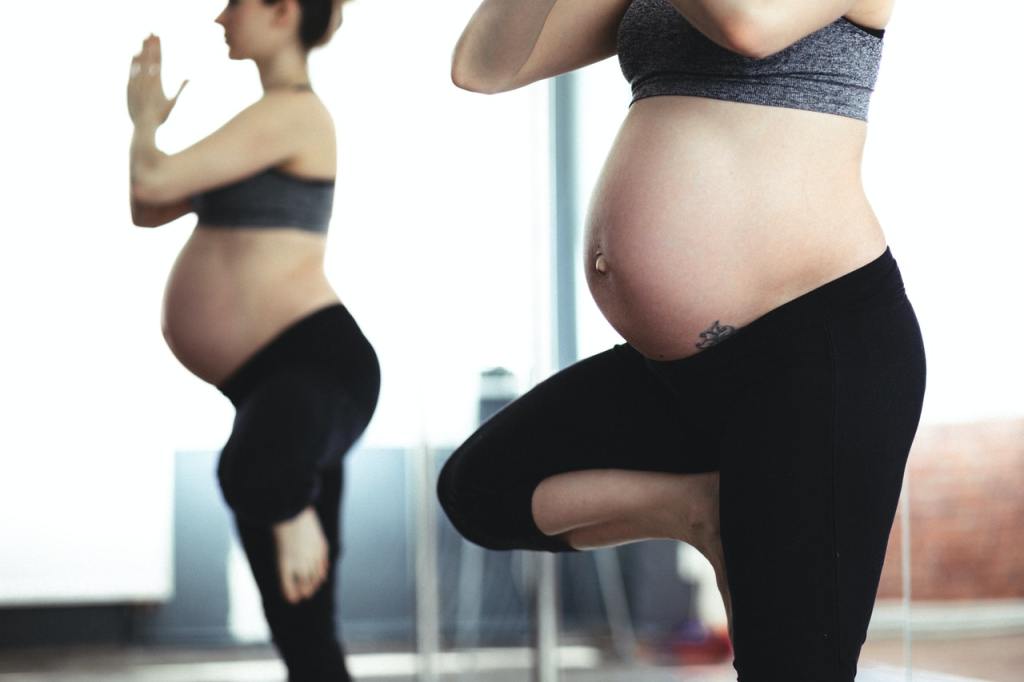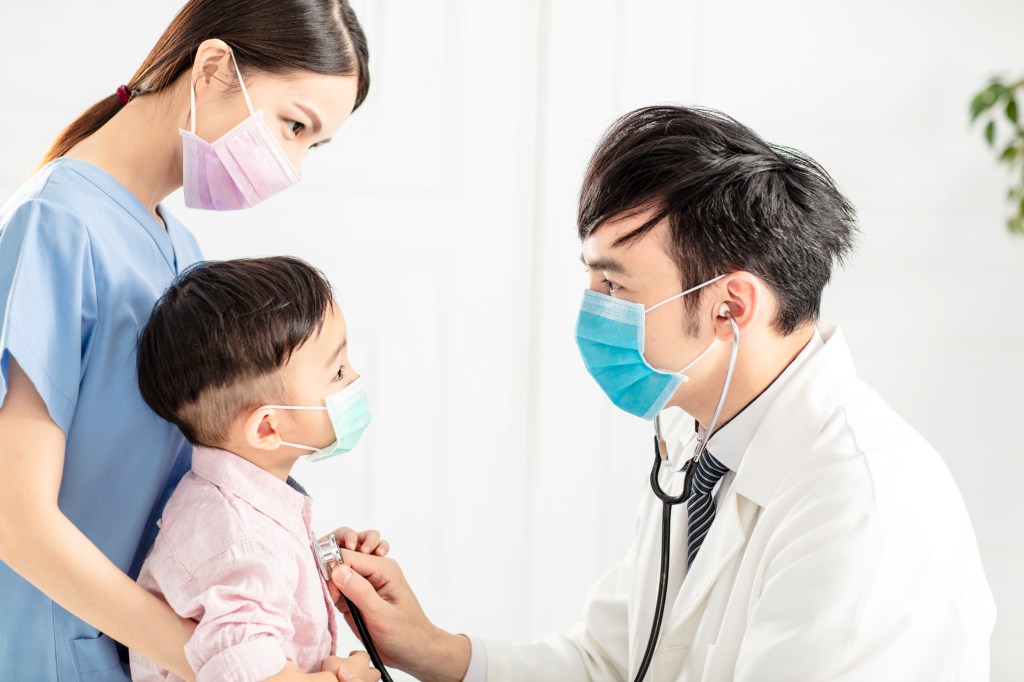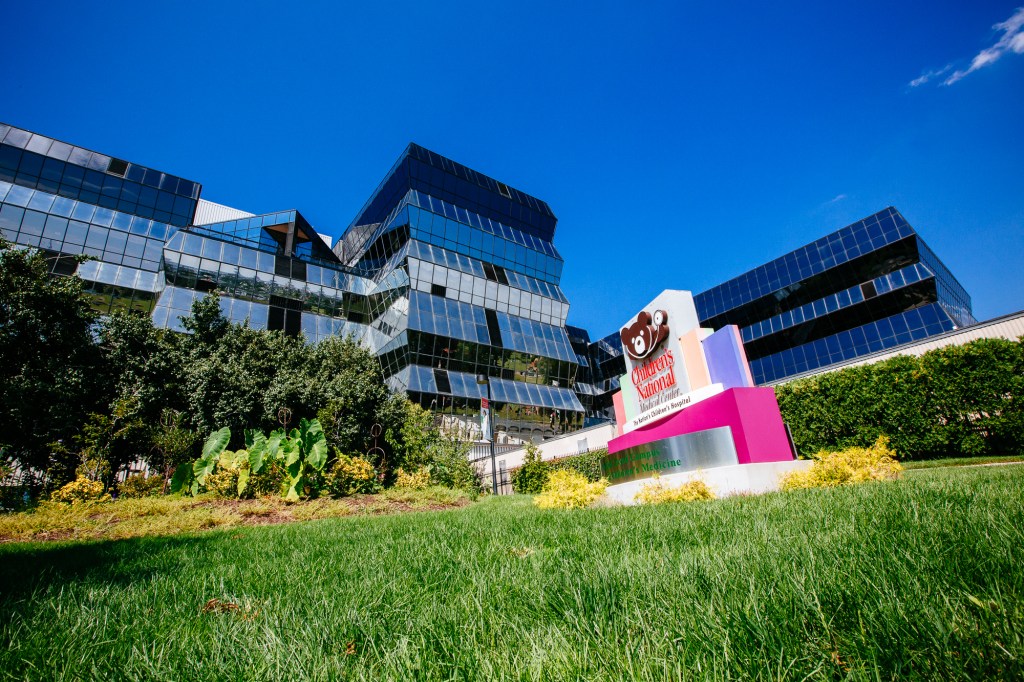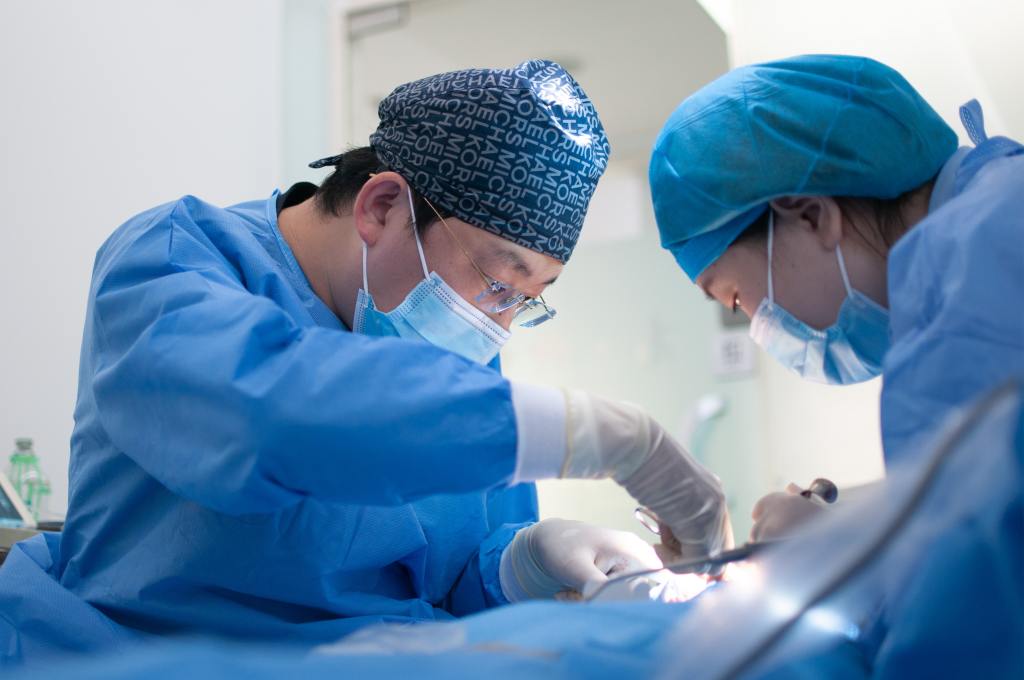Temperatures are climbing and where better to beat the heat than the beach? In addition to being a cheap/free activity, kids (and adults!) can enjoy fresh air and Vitamin D. We’ve rounded up some of the best beaches for kids all over the Bay Area that include lakes, lagoons and shores worth setting up the sunshade. Grab that sun hat, slater on the sunscreen and pick your sand below!
San Francisco
Chrissy Field
When the sun’s out, East Beach is full of families building sandcastles, digging and running in and out of the waves. For those wanting to avoid the surf, a lagoon makes an ideal splash spot for little ones. The nearby Beach Hut Café serves snacks and coffee and there’s ample parking. You'll also find plenty of four-legged friends here too as the beach is popular with the city’s dog owners. The west end of Crissy Field, though smaller, is another great option. The Warming Hut offers sandwiches and goodies, there are BBQs and picnic tables and the kids can spend hours playing in the more gentle surf or looking for crabs. While the water is usually clean and safe, watch out for posted signs and wildlife and go in the morning as the wind usually picks up by mid afternoon.
Aquatic Park Cove
This spot is great if you don’t think your gang can hang for too long at the beach. The sandy beach and calm water are perfect for the toddler set. Fisherman’s Wharf is a short walk away and you can tour historic boats at the Hyde Street Pier for a small fee. The park is also home to the famous Dolphin Club and their rivals the South Bay Rowing Club, so there are lots of serious swimmers in the water here. Parking can get a little tricky after mid-morning, but there are some large garages a short walk away.
China Beach
Tucked into a practically secret cove, this hidden gem in San Francisco’s tony Sea Cliff is a sweet sandy introduction for little beachcombers. Back in the Gold Rush days, it was the campsite of Chinese fishermen and their boats. There’s a monument commemorating this bit of history at the beach’s entrance, where there’s also parking. You’ll need to go down a few steps to hit the sand. Take in the views of the Marin Headlands and build a sandcastle, but be careful of the surf, which can be unpredictable.
Clipper Cove
This hidden gem is tucked away on Yerba Buena Island. You’ll find the clean, sandy stretch of beach at the bottom of a set of stairs, leading down from the Clipper Cove Picnic area. Occasionally the small parking lot is roped off, if so, some people will park at the Marina and walk back. It’s worth the trek! The water is calm, shallow and usually warmer than other parts of the Bay. Consider grabbing some lunch and playing some outdoor games at the family-favorite Mersea Restaurant.
Angel Island State Park
Accessed by ferry from San Francisco and Tiburon, Angel Island is a special place to hang out by the water for the day. The gently lapping Bay waters and sandy beaches of Ayala Cove and Quarry Point are protected by winds, thus ideal for little water sprites to explore. There are some picnic benches off the sand and open grassy areas for a blanket. The only traffic is the guided-tour tram and park vehicles, so bring bicycles when a break is needed from all that water play. There are also great hikes, from easy to moderate. No picnic? No problem! The Angel Island Company Cafe serves up delicious salads, sandwiches, wraps and other goodies. Check out our full guide to Angel Island.
East Bay
Cull Canyon
A gentle gradient makes this lagoon ideal for smaller kids. They can splash around in the shallows and build up their confidence in the water while you enjoy the white, sandy beach and dig in for the day. Older kids might like to try out the diving platform. They'll just have to pass a quick swim test with a lifeguard. There’s a bathhouse with vending machines and lifeguards are on duty daily from June through to August, 11 a.m.-6 p.m.. A beach access fee applies ($4 for adults, $2 for kids) but parking is free.
Editor's note: Lake Anza is closed for the 2022 season for maintenance
Lake Anza
Tilden Regional Park offers tons of ways to escape that East Bay heat. In addition to hiking trails, the steam train, a carousel and The Little Farm, there’s the picturesque Lake Anza. Its dog-free beach is sheltered from the wind and typically gets plenty of sunshine. On weekends, the Lake Anza Beach Club offers a variety of food options including nachos, smoothies, sandwiches and ice cream. The Lake Anza swim season runs from the end of April to mid September with lifeguards on duty daily. The cost is $3.50/adults, $2.50/kids. Parking is free. Open from 11 a.m.-6 p.m., Mon.-Sun.
Lake Temescal
This lake and surrounding park are an easy destination in the Oakland hills. Ample parking is close to the beach, so it’s great for those of you with a lot of gear and/or friends joining you! The nearby beach house offers showers and changing areas (bathrooms are porta-potties, however). Lifeguards are on duty from mid-June through August. Beach access is free for babies under 1, otherwise its $3 for anyone over 16, and $2 for kids between 1 and 15 years old. Parking is $5. Beware this beach has been closed periodically for algae blooms. Check conditions before you go.
Don Castro Regional Park
Swimming in the lagoon is this park’s main attraction. The sandy beach is surrounded by mature trees and has easy parking. There’s a large roped off section at a depth of two feet for the little ones to paddle in and the lifeguards are vigilant. Swimming is only allowed when they are on duty, 11 a.m. to 6 p.m. daily during the summer. There is a vending machine and a large lawn area when you’re done with the sand. No dogs are allowed and beach umbrellas and wheelchairs are available for those who need them on a first-come, first-served basis. After swimming, take a quick hike to find a hidden waterfall! It's down a small path near the entrance.
Editor's note: Del Valle is currently closed due to bacteria advisories. Check website for latest updates.
Del Valle Regional Park
This spot has not one, but two swimming beaches opening for the season. While swimming is allowed through much of the five-mile-long lake, the East and West beaches offer lifeguard services between 11 a.m. and 6 p.m. from June through August. And when the family’s all toweled off, the park has picnic facilities, boat rentals and a visitor center to keep you occupied. There is not a separate fee for the beaches, but parking inside the park is $6.
Crown Memorial State Beach
Crown Beach lives up to its name as one of the Crown Jewels of East Bay beaches. It has more than two miles of sandy shoreline, flanked by rocky jetties and outcroppings. So not only is it great for swimming and wading, but you can find lots of sea life in those nooks and crannies. You can learn more about any discoveries by popping into the Crab Cove Visitor Center (open Weds.-Sun. 10 a.m.-5 p.m.). You can swim year-round if you’re up for it, but note there are NOT lifeguards. You’ll also want to check the tides before you go; low tide can be great for exploring but not-so-great for swimming. Dogs are not allowed.
Editor's note: Shadow Cliffs is closed for low water levels
Shadow Cliffs
Just a mile outside downtown Pleasanton is a sweet, sandy spot for swimming, picnicking, boating and general fun in the sun. A former gravel quarry, this little swimming lagoon is ideal for kids to cool off and splash around; even early in the morning the water is far from chilly. There’s a bathhouse and refreshment stand open on weekends in spring and fall, and daily during summer months. Lifeguards are on duty June through mid August, but swimming is allowed throughout the year. The cost is $6/vehicle and there’s a $2 fee to bring a dog.
Contra Loma Regional Park
What about a nice, protected swimming lagoon in the heart of an 80-acre reservoir? Boating, picnicking, biking and nature study are all popular at Contra Loma Regional Park and the swim lagoon has a sandy beach with restrooms and a concession stand. Lifeguards are on duty 11 a.m.-6 p.m. daily from June to mid August. Similar to other East Bay Park swim spots, there is a small beach access fee.
Keller Beach
You’ll feel like you’ve discovered a hidden cove when you visit this little spot, tucked away in Richmond. The crescent-shaped beach has fine, clean sand which is perfect for taking in the views of the Bay. On a clear day, you can even see the top of the Golden Gate Bridge. The water is fairly shallow and even has tiny waves. Note: there are no lifeguards on duty. If you have a lot of gear, this is a good place to use that wagon or beach buggy as the beach is a bit of a trek down a paved path from the road.
Peninsula
Parkside Aquatic Beach
This San Mateo beach comes with a bonus: a playground! On one side of the sandy swim beach there’s a play structure for kids, and on the other side, picnic tables if you prefer to keep the sand out of your sandwiches. The waters are part of the Marina Lagoon, between San Mateo and Foster City. You’ll find parking and restrooms as well as accessibility for boating and a sand volleyball pit.
Oyster Point Marina
This sandy beach, over two acres long, has a roped-off area for swimming in the peaceful waters. There is no lifeguard on duty but the site has picnic areas, restaurants and all the fun of watching the comings and goings of the nearby yacht club. The water is part of the Bay and is tested weekly for safety. There’s a flock of Canada Geese that have taken a liking to this beach, too, so watch for closure signs or check the County of San Mateo Health System site for details.
Linda Mar Beach
It’s official name is Pacifica State Beach, but locals know it as Linda Mar or the beach by the nicest Taco Bell ever. Kid-friendly and dog-friendly, Linda Mar is popular with surfers, and often beachgoers will see surf campers being schooled in the art of riding the waves. Bring a picnic blanket and some sand toys, and get digging! Restrooms are open from 6 a.m. to 10 p.m. Parking is $7 for four hours, or $9 for all day.
Rockaway Beach
Slightly up the coast from Linda Mar, this is quieter and more secluded beach is a stunner with rocky hills on either side. Parking can be more difficult, but it’s free and during migration season, whales frolic and play close by so it’s a front-row seat to one of nature’s greatest shows. Nick’s Seafood Restaurant is just off the beach if you and the fam get a hankering for some old-school fish dishes (the crab sandwich is a definite winner). Moonraker is also close by, and while it has more of an adult vibe, one of their nice big booths would do fine for an early dinner or brunch with the youngsters.
South Bay
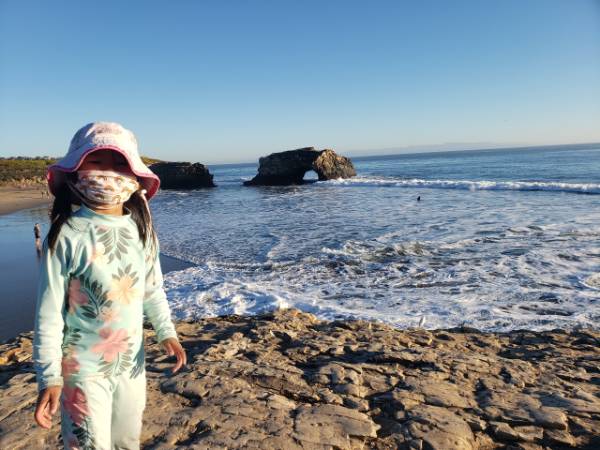
Natural Bridges State Beach - Santa Cruz
This beach is especially good for families as it has protected waters and lots of parking ($10 fee applies). In addition to spending your day on the sand, here you can visit migrating Monarch butterflies and check out some amazing tide pools.
Capitola Beach - Capitola
This quaint spot will give you beach vibes like no other with adorably colored houses at one end and miles and miles of sandy beaches. There are a few paid parking lots that fill up fast (come early) and metered street parking. Beach Break by Marianne's is the perfect spot for a scoop of ice cream before you head home.
SeaCliff State Beach - Aptos
A long, gorgeous stretch of beach is backed by bluffs and we always bring in a picnic to spend the day here. Shaded picnic tables, restrooms and natural seesaws made of logs means a full day of play—top off the day with a trip to nearby Marianne's for the best ice cream in town!
Marin/Sonoma

McNears Beach County Park - San Rafael
Set in a beautiful sheltered cove along the shores of San Pablo Bay, this narrow bayside beach offers a fun, safe place for swimming and water play. If the kids are happier in a swimming pool, there is one right on the beach, open Wed.-Fri. from 11 a.m.-5 p.m. or 6 p.m. on the weekends. As a bonus, there’s a snack bar, sand volleyball courts, picnic areas and newly-renovated tennis courts. The pier is popular with anglers fishing for sturgeon, bass, perch and crab. The gentle gradient also makes carry-in boat access easy for kayaks and canoes. Be prepared for the parking fee, $8 during the week, $10 on weekends.
Chicken Ranch Beach - Marshall
Don’t let the name put you off; this beach is hidden away just north of Inverness off Sir Frances Drake Boulevard and nestled along the west shore of Tomales Bay. Keep your eyes peeled for cars parked along the side of the road; the signs for the beach are hard to see and often the other cars are the only indication something cool is nearby! A short trail leads to this mellow beach with a gentle gradient. The water is both warmer than the Pacific and wave-free so it’s perfect for paddling. While the beach isn’t huge, there’s plenty of room to spread a blanket, have a picnic and even fly a kite. It can be rocky, so pack the water shoes if you have them.
Schoonmaker Point - Sausalito
Nestled in the calm waters inside a yacht harbor, this is a perfect beach spot for families with small kids. The water is sheltered, the beach has a gentle gradient and it’s surrounded by boats docked in the marina. There are a number of restaurants nearby as well as grocery stores for picnic supplies. The word is out on this once secret beach though so the beachside parking fills up quickly. If you’re not cut out for all-day relaxation, the Sea Trek Kayaking Center is right on the beach and kayak rentals start at $20/hour, with options for kids and life jackets for all.
Paradise Beach - Tiburon
Paradise is well-named. This bayside beach is quiet and secluded with mature landscaping, colorful poplar trees, wildflowers and rolling grassy hillsides above the San Francisco Bay. There's even a redwood grove! The beach runs along the east shore of the Tiburon Peninsula, nestled in a residential neighborhood. There are lots of picnic spots, fishing off the pier and a sandy beach with no surf, perfect for paddling. The area is pet free but watch out for the parking fee, $8 during the week, $10 on weekends. They host a handful of free days throughout the year, so check before you go.
Heart’s Desire Beach- Inverness
This great beach in Tomales Bay State Park has an off-the-beaten path feel. Shallow waters extend far into the Bay and the shore is sheltered from any wind. Picnic tables and barbecue pits are on site as well as restrooms and changing rooms. Bring your own picnic and supplies, the closest village you can stock up on refreshments and snacks is Inverness. Heart’s Desire Beach has two parking lots for easy access.
Johnson’s Beach - Guerneville
Take me to the river! The Russian River, that is. Johnson’s Beach is a popular, family-friendly destination for paddling around in a fresh water environment. A roped-off area especially for tots is a perfect place to splash around on a hot day. The beach is run by a resort, which features a lodge, cabins and camping, so come for the day or for a mini-break. Hit the snack bar for hot dogs, burgers and ice cream. Looking for some fun activities? Rent a kayak or inner tube. There’s no entrance fee to the beach, but day parking costs $5.
Mom’s Beach - Forestville
Officially, this Russian River beach is named Forestville River Access, but locals know it as “Mom’s Beach” because it’s a small, peaceful place to bring the kids. The rocky beach surrounded by redwoods is also a popular fishing spot. Leashed dogs are allowed and parking is free. A short trail from the parking area leads down to the beach. There is only a pit toilet during the summer months, and open hours are 7 a.m. until a half-hour before sunset. Bring your blankets, beach chairs, sunshade, toys and picnic, and you’re all set for aquatic fun!
